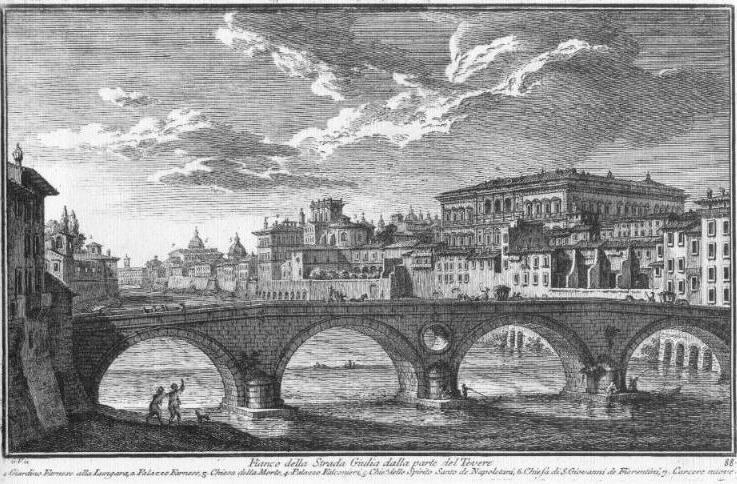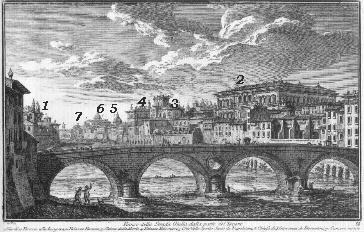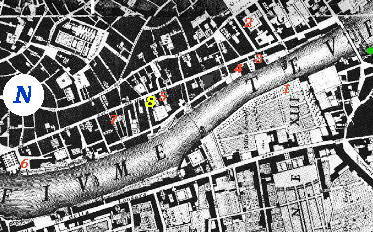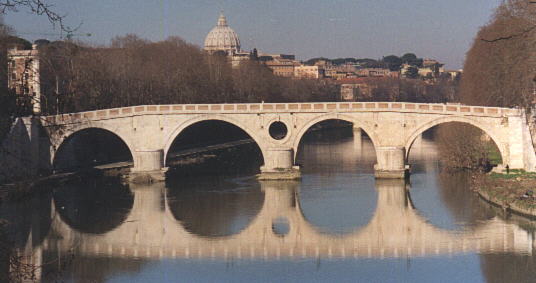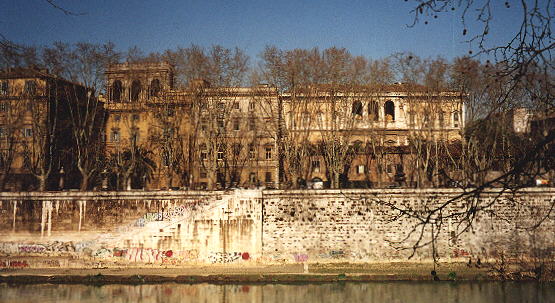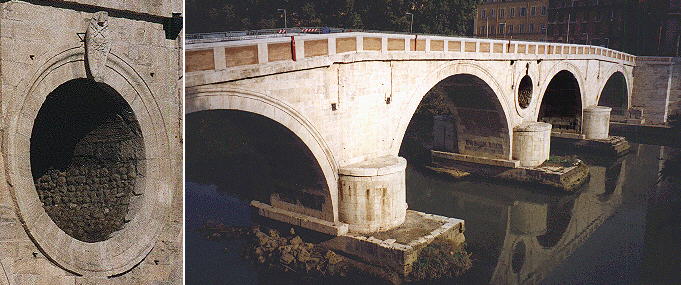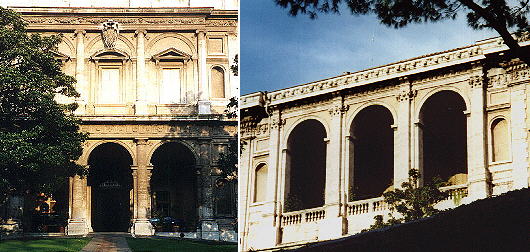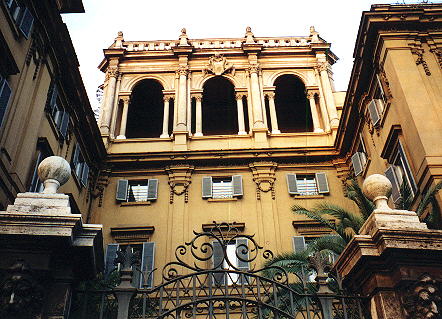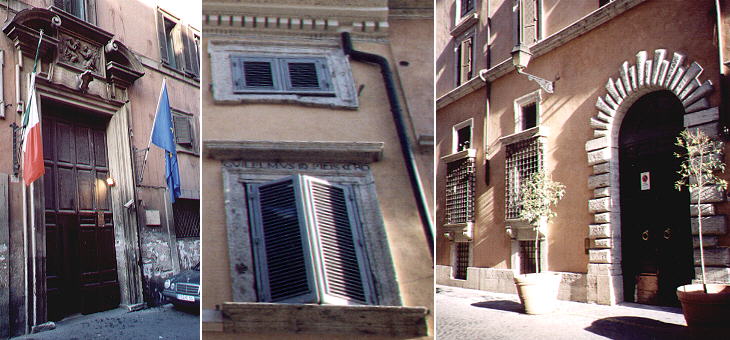  Fianco della Lungara e di Strada Giulia (Book 5) (Map C3) (Day 7) (View D8) (Rione Regola) In this page:
This is one of the most sought after plates because of the very interesting
view of the river inside Rome. The title refers to the two streets (Via della Lungara and
Via Giulia) opened by Julius II at the beginning of the XVIth century
to facilitate the access to the Vatican from Trastevere and from the area around palazzo Farnese. Vasi lines up palaces and churches behind
Ponte Sisto. The view is taken from the green dot in the small 1748 map here below.
In the description below the plate Vasi made reference to: 1) Giardino Farnese;
2) Palazzo
Farnese; 3) Chiesa
della Morte; 4) Palazzo Falconieri; 5) Chiesa
dello Spirito Santo dei Napoletani;
6) S.
Giovanni dei Fiorentini; 7) Carcere
Nuovo. All but 4) are shown in detail in other pages. The small map shows also: 8) Collegio Ghislieri.
The view today is necessarily split into two pictures. To get a frontal view of Ponte Sisto one has to move back to a point from which Palazzo Farnese and Palazzo Falconieri are not visible. Vasi's view is taken at sunset in summer. These views are both taken in the morning and in winter to see through the tree curtain.
Built in 1474 by Sixtus IV on the site of Pons Aurelius it has resisted the many floods of the Tiber; the central eye also provided an additional passage for the water and thus decreased the pressure on the arches. The eye allowed easy measuring of the level of the river and it was a warning indicator of an incoming flood. Plate 89 shows another view of Ponte Sisto. Palazzo Farnese and Palazzo Falconieri
The fašade of Palazzo Farnese towards the Tiber is due to Giacomo della Porta who completed the work of Antonio da Sangallo and Michelangelo. The very fine loggia of Palazzo Farnese inspired Borromini when he designed the loggia of nearby Palazzo Falconieri.
Collegio Ghislieri and other Renaissance palaces
Giuseppe Ghislieri a doctor and a distant relative of Pope Pius V founded in 1630 an institution for the
education of 24 students belonging to families who could not pay tuition fees. In 1670 the institution bought a large building in Via Giulia:
the portal was decorated with a relief showing the Holy Family and a long inscription celebrating Ghislieri. The portal is nearly the only remaining part of the building because in the
1930s a modern school replaced the old college.
Next plate in Book 5: Veduta del Giardino Farnese Next step in Day 7 itinerary: Chiesa di S. Caterina della Ruota Next step in your tour of Rione Regola: Palazzo Farnese
Go
to |
All images © 1999 - 2003 by Roberto Piperno. Write to romapip@quipo.it
